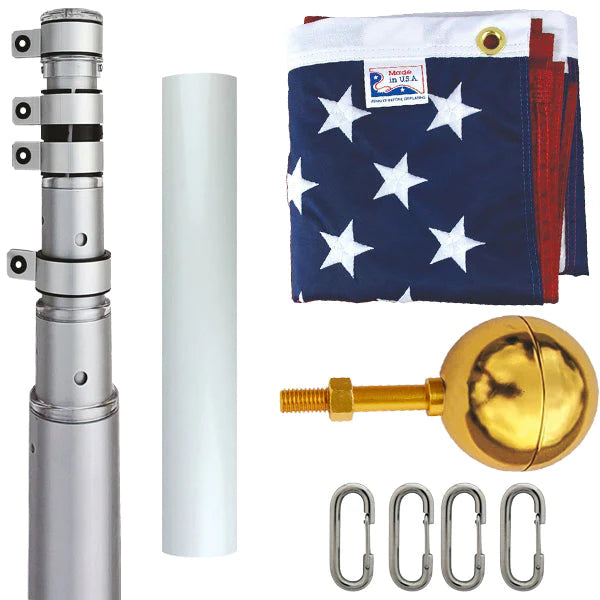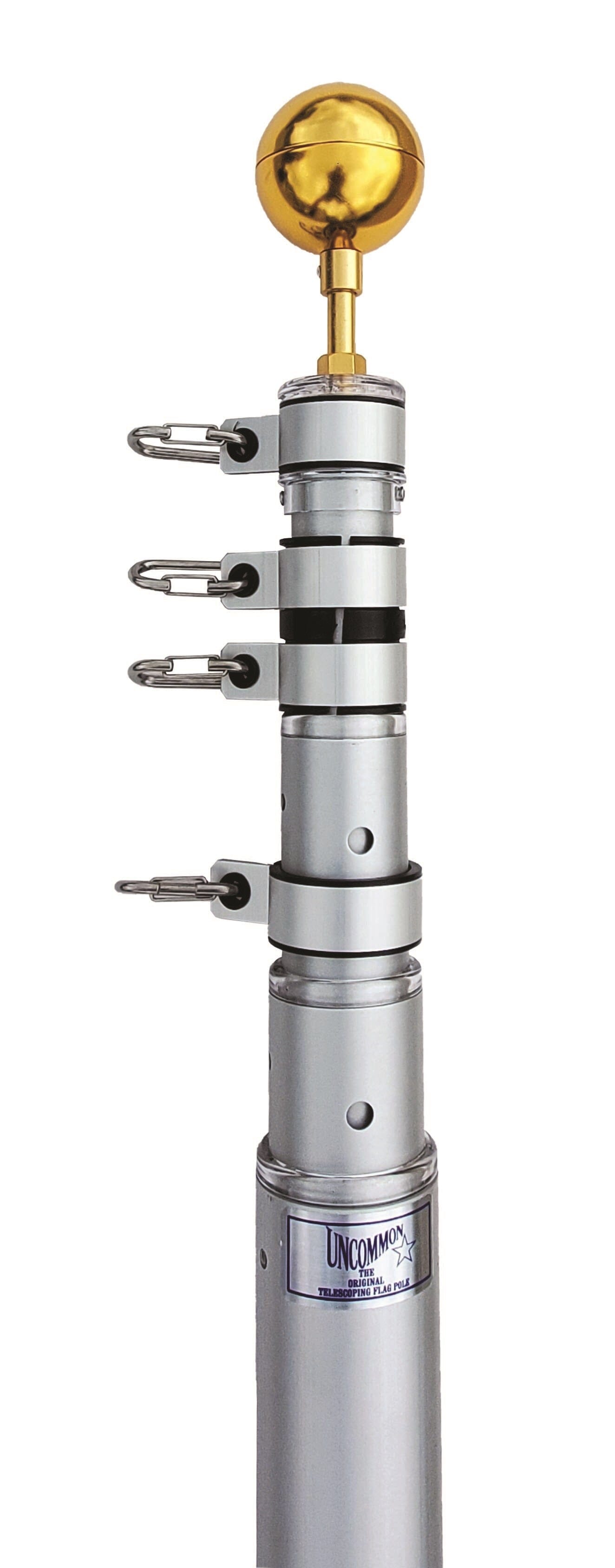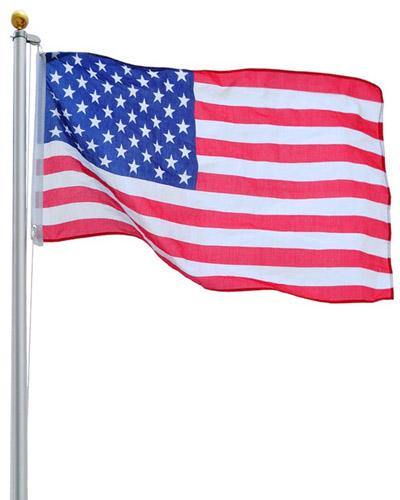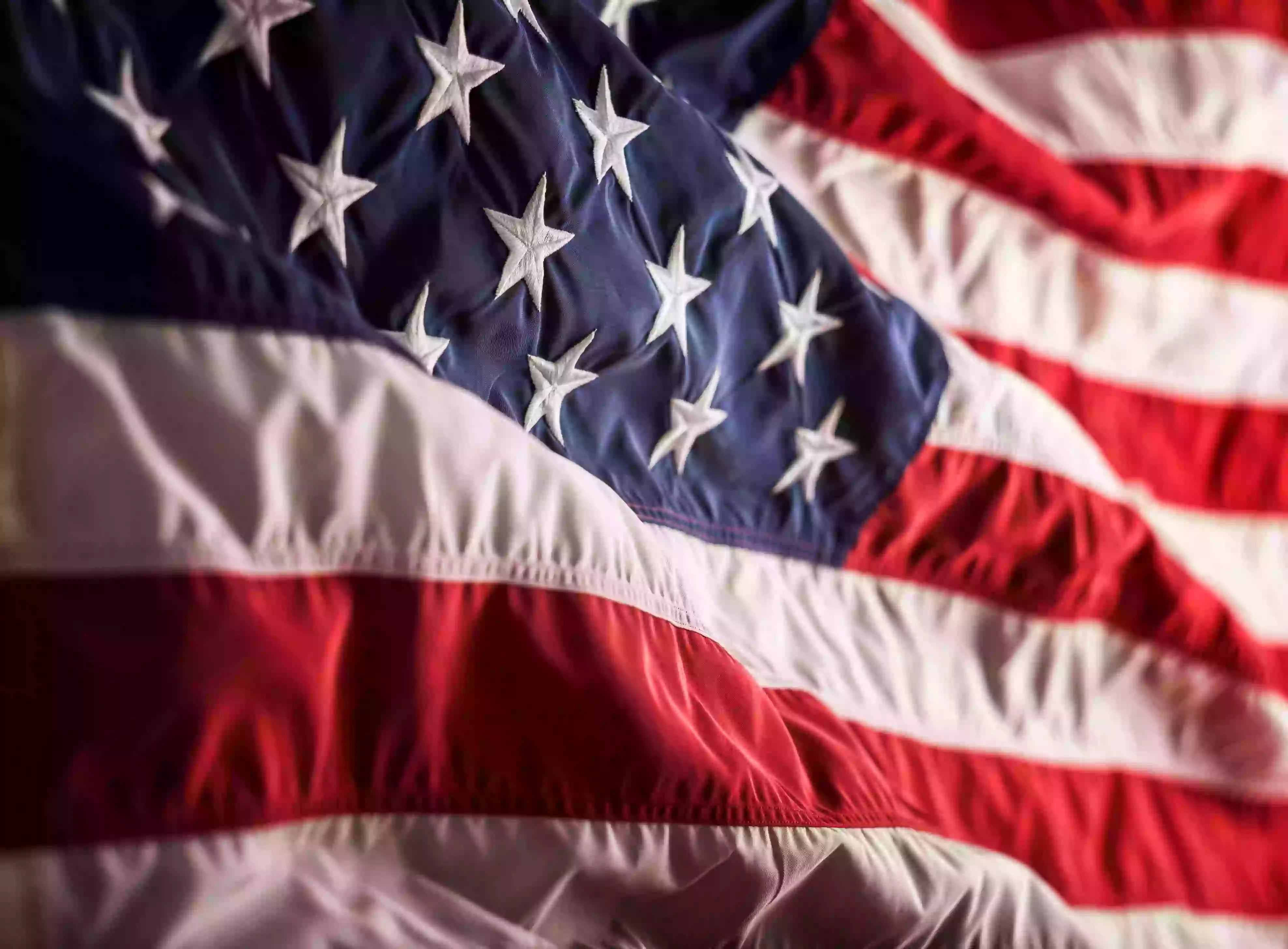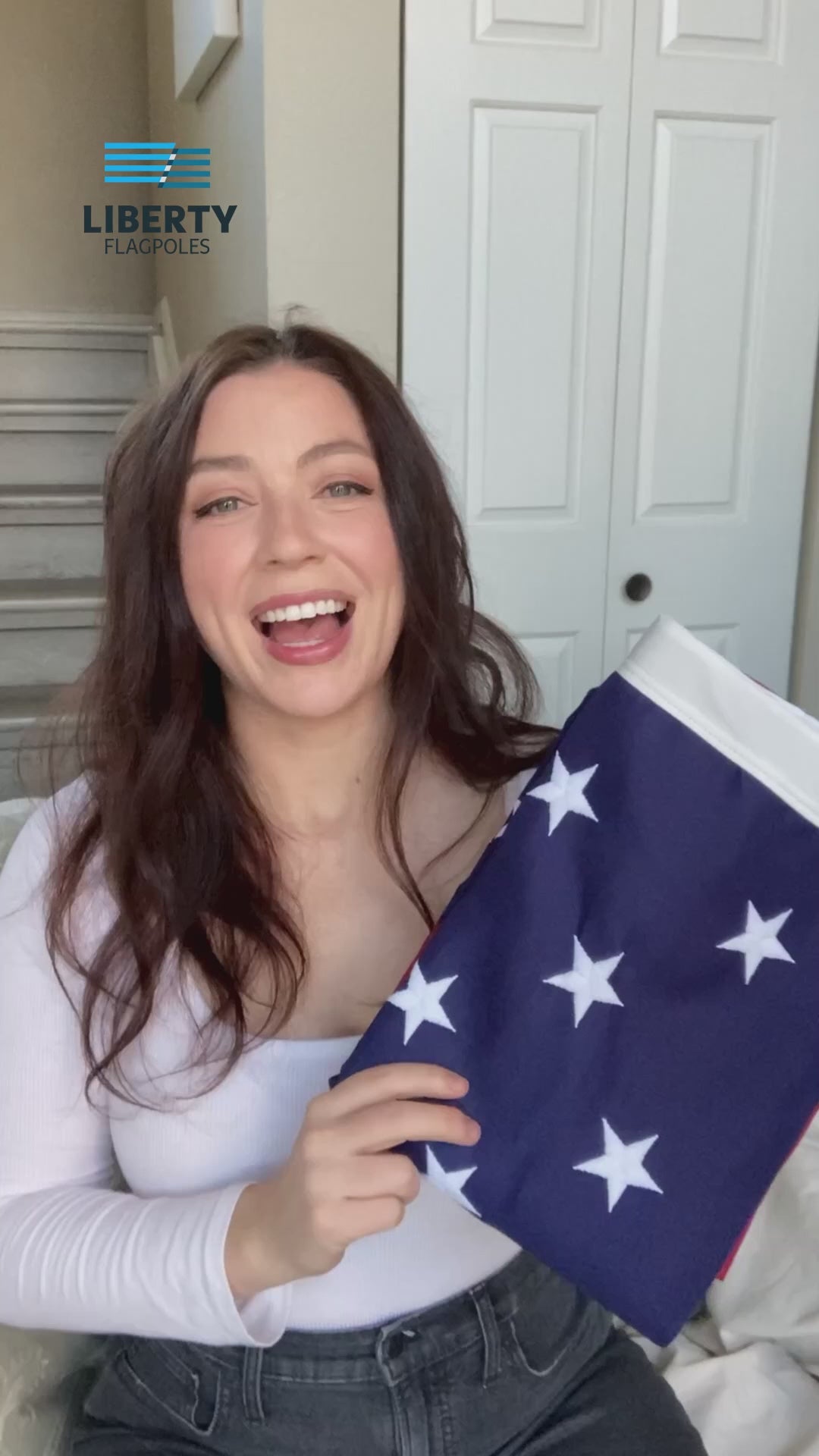Most of us don’t think too much about the fabrics used for our clothes and furniture, but designers do. Each type of fabric has different qualities, and even how they’re woven or knitted together can change their characteristics. Historically, people have used all kinds of fabrics to make American flags, though today we tend to prefer synthetic fabrics for durability and weather resistance. Check out our complete guide to the different types of flag materials.
Historical Flag Fabrics
In the past, people could only make cloth from naturally occurring fibers. We call these fibers natural because they all come from plants, insects, or animals. In clothing, natural fibers are breathable, allowing air to circulate against the skin. However, these fabrics aren’t as weather-resistant as synthetic fibers, which is why we don’t use them for flags today. These are some of the natural fibers previously used to make flags:
- Silk from silkworm cocoons
- Wool from mammal fur
- Cotton from cotton plants
- Linen from flax plants
- Hemp from cannabis plants
Silk Fabric
Silk is a fabric that people have been making for thousands of years from the cocoons of mulberry silkworms. While it’s possible to collect these cocoons in the wild, most silk comes from silkworms raised in captivity in order to get more uniform fibers. When the worms enter the pupae stage, farmers take the cocoons and boil them to unravel the long, spindly fibers.
Silk is valued for being a very strong natural fiber, which is one reason it makes a good material for flags. In fact, the oldest extant American flag is made from silk damask. It’s the Bedford Flag, a unit flag for the Minutemen of Bedford, Massachusetts, and it was their standard during the Battles of Lexington and Concord.
Wool Fabric
The most common sources of wool are sheep, goats, and camelids, a family of animals that includes llamas and alpacas. Wool is a type of fur, typically an underlayer. To collect wool, you have to shear the fur from the animal, clean it through a process called scouring, and spin it into yarn. Once you have enough yarn, you can weave or knit it into fabric.
Since many of us wear primarily synthetic fiber clothing, most of us misunderstand how wool works as an insulator. Many people wrongly assume that wool is too heavy to wear in hot weather. In reality, wool is able to retain body heat very well, but this same insulation property helps keep out the heat. Wool is warm in winter and cool in summer, making it a very versatile fabric.
Cotton Fabric
Cotton is a fabric most people are familiar with because it’s still a very common material in clothing. It comes from the cotton plant, which produces a fluffy fiber to protect and spread its seeds. After harvesting the fibers, you have to clean cotton to get rid of seeds and plant particles. Then, similar to wool, you can spin it into yarn for making into fabric.
Cotton was a convenient fabric for making American flags, but it’s not an ideal choice. Unlike wool, which has natural oils to help repel water, cotton soaks up water quickly; it also frays. This makes cotton a less-than-ideal fabric for making flags since they need to hold up to bad weather.
Linen Fabric
Linen comes from the flax plant, and like many fibers on this list, people have been turning this material into clothing for thousands of years. Historically, linen was a popular choice for undergarments since it dries more quickly than cotton and is very breathable. Today, you’re more likely to see linen in upscale home goods and clothing, like tea towels and tablecloths.
Hemp Fabric
Hemp has a somewhat negative association today because it comes from the cannabis family. That said, hemp fabric has been around for a long time and has nothing to do with anything illegal. In fact, Founding Fathers like George Washington and Thomas Jefferson grew hemp because it’s an important crop for making rope and canvas.
Canvas fabric has a lot of uses, both today and in the past. It goes into making sailcloth, backpacks, purses, shoes, and interlining for historical garments like stays and corsets. Given its strength and availability, it’s no surprise that people made flags out of hemp.
Modern Flag Fabrics
Most modern flags are made of nylon or polyester, which are synthetic fibers. Synthetic means that scientists invented these fibers, and they do not occur naturally in the world. These materials tend to require a higher level of processing to make, but the results are strong fabrics that can withstand daily wear and tear much better than natural fibers.
Nylon Fabric
Nylon was invented in the early twentieth century by the same research team that invented neoprene. Its first commercial use was in toothbrushes that had nylon bristles. Eventually, the word nylon became synonymous with women’s stockings since so many manufacturers switched to using this material.
Nylon is a fantastic material for American flags because it’s strong, quick-drying, and doesn’t unravel like most natural fibers. In fact, the first American flag planted on the moon—the Lunar Flag Assembly—was made from nylon fabric!
Polyester Fabric
Most people don’t realize that polyester is a huge group of chemical compounds, not just one specific type of material. Polyester is a type of polymer with a certain chemical structure. The same researchers who invented nylon and neoprene also created polyester, but it took much longer to work out the details. Polyester didn’t become a major source of fabric until about the 1950s.
Polyester is very strong fabric that can resist water, strong winds, and tears; these traits make it an excellent choice for American flags. You can often find pure polyester flags or cotton-polyester blends.
Choosing the Right Flag Material
We hope you enjoyed our complete guide to the different types of flag materials. If you’re looking for an American flag to put in front of your home or business, take a look at our collection of flags at Liberty Flagpoles. For short flag displays in mild climates, you can use either polyester or nylon flags. However, we recommend using nylon flags for tall displays and during inclement weather.
Liberty Flagpoles carries American flags as well as historical, military, and state flags. Let us know what you’re looking for—we’d love to help you find the right flag or design a flagpole display. Give us a call or send us an email if you have any questions.



